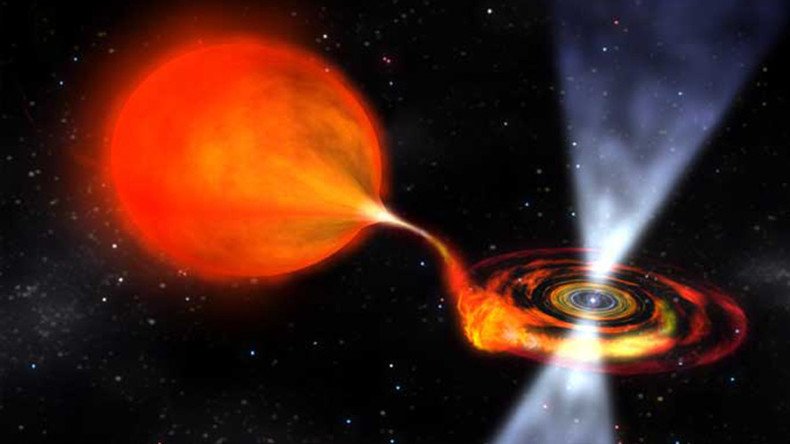Scientists are buzzing (again!) about gravitational waves and what a big deal they are. Wait! Don’t be embarrassed if it all leaves you confused and you just can’t share their excitement. Here's your guide to gravitational waves, short and simple as ABC.
So here's what happened: researchers at Montana State University have an update from the LIGO observatory on their progress in detecting gravitational waves. It is one of the biggest mysteries of the past 100 years that we inherited from Albert Einstein.
Astrophysicists made a similar announcement last March and have been keeping more than just fellow scientists on their toes since then.
It is obviously a complicated thing – otherwise it wouldn’t have taken so long to explore, right? So it’s OK not to know what everyone is so excited about.
No worries, we're here to explain!
1. Einstein first mentioned gravitational waves in 1916 in his General Theory of Relativity.
Scientists have been racking their brains over it since then.
2. The universe is like a huge trampoline. Einstein thought of it a space-time fabric. Gravitational waves are like ripples in that fabric.
Imagine dropping a melon versus a ping pong ball on that fabric. Which would 'sink' deeper? Exactly! The same happens in the universe: lighter objects create less of a ripple.
3. Gravitational waves were 'born' during the Big Bang about 13.8 billion years ago! Apparently, we still feel them, but they are minuscule.
This is why detecting gravitational waves is important – they may hold the answer to the origins of the universe.
4. These gravitation waves are created when two or more huge objects bump into each other.
For example, two black holes colliding would theoretically cause a massive ripple.
5. 'They do exist!' Or not. We have never detected gravitational waves directly and this is the main task.
Detecting gravitational waves is simpler in theory than in practice. Space is so huge that the further ripples go the harder it is to catch them.
6. One of the ways to hunt for the waves is to measure stretches in space-time (that fabric from #2, remember?).
For that, American scientists use a huge laser system, the Laser Interferometer Gravitational-wave Observatory (LIGO).
Its detectors - which look like laser 'rulers' - are meant to spot tiny vibrations from passing gravitational waves.
7. LIGO reaches as far as up to 225 million light years away. It is so sensitive that it catches changes in the distance as small as 1/10,000 of the diameter of a proton.
And even LIGO makes mistakes! In 2010, it was fooled by a fake signal... from scientists. However, six years ago it wasn't as advanced as now, so let's not count that one.
8. We almost caught the gravity waves in 2014, but not quite. It was a false alarm, again.
BICEP2, an observatory in Antarctica, right near the South Pole, thought it had netted the evidence for gravitational waves from the dawn of our universe, but no.
If you still do not quite get what is happening, it's OK. First, it's a VERY short guide to a mystery as old as our universe. Second, scientists have been looking into it for 100 years since Einstein (so, add the time he spent, too!) and they are not there yet.
LISTEN MORE:

